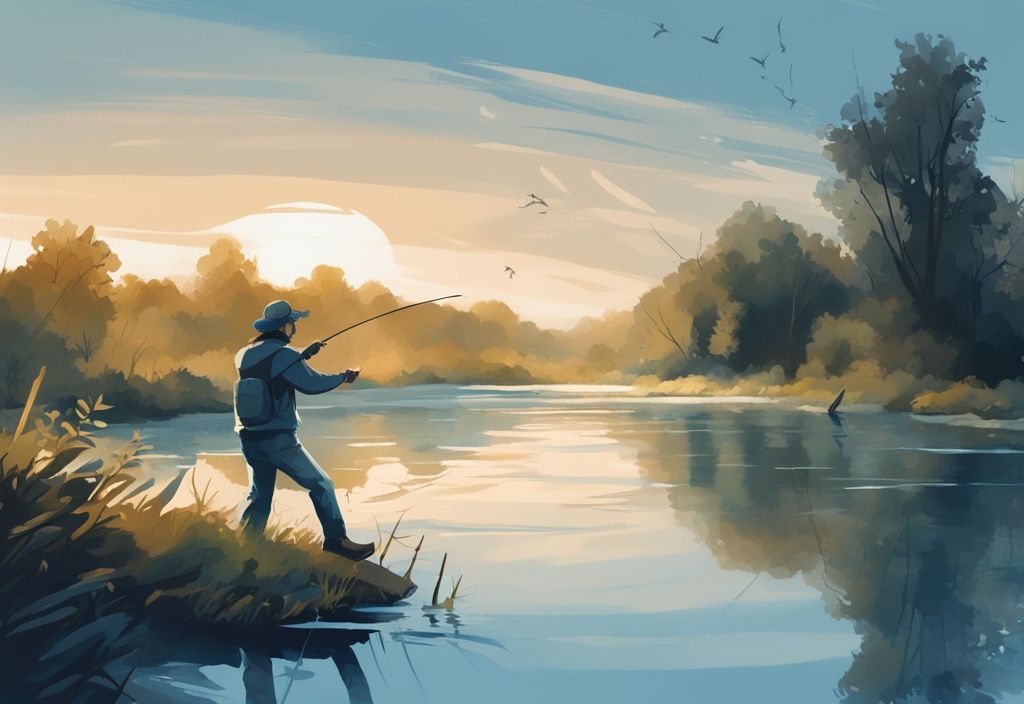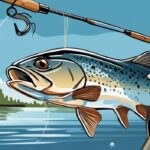Ever cast into a crystal-clear stream, only to scare off the nibbling trout? Ever wondered how to outsmart those frustratingly elusive bass in packed lakes? Enter BFS fishing – a game-changer for anglers craving precision and control. Based on my two decades of experiences, this Japanese developed Bait Finesse System can be the missing piece in your fishing adventures.
Armed with the right lightweight gear, BFS fishing can up your success rates, even in the most challenging conditions. This comprehensive guide is your ticket to understanding, and mastering BFS fishing. I promise, once you dip your line into these techniques, there’s no turning back.
So buckle up, fishing pals! Ready to discover how BFS can transform your angling and make you the talk of the boat ramp? Just keep reading…
What is BFS Fishing?
BFS, short for Bait Finesse System, is a sophisticated fishing technique that marries finesse lures with baitcasting gear, achieving remarkable precision and control. This innovative method originated in Japan, born from the challenge of catching highly pressured and finicky fish in various environments.
Picture this—crystal-clear mountain streams teeming with trout or heavily pressured waters where the clever largemouth bass seem to dodge every conventional lure. That’s where BFS fishing shines. By focusing on casting tiny lures with exceptional accuracy, it allows anglers to present their baits delicately, enticing even the most cautious fish.
The secret sauce in BFS fishing? Specialized rods and reels crafted specifically for this technique. These tools enable anglers to cast lightweight lures with pinpoint accuracy, leveraging advanced gear technology to minimize the risk of backlashes and maximize casting distance. The finesse nature of BFS opens doors to explore tight spaces, like under overhanging trees or near dense vegetation, where traditional fishing methods often fall short.
In essence, BFS fishing transforms your approach, putting sensitivity and control front and center over brute strength. This method not only enhances the fishing experience by providing a technical challenge, but it also significantly boosts your chances of success in environments where fish are wary and conditions demand precision.
Understanding what is BFS fishing is fundamental for any angler looking to refine their skills and tackle the unique challenges presented by highly pressured fish and demanding fishing spots. This method blends the art of finesse with the power of baitcasting, resulting in a uniquely engaging and effective fishing style.
If you’ve ever struggled to catch fish in tough conditions, giving BFS fishing a try might just revolutionize your angling game. And trust me, the sense of accomplishment when you land that elusive fish is second to none.
Why Choose BFS Fishing: Its Purpose and Advantages
-
Purpose:
- The goal is precision control and casting accuracy of small lures to attract fish in pressured environments.
Precision Control and Casting Benefits
The Bait Finesse System (BFS) revolutionizes the fishing experience by providing unparalleled precision control and casting accuracy. Unlike traditional baitcasting, BFS employs lightweight lures and advanced rod and reel technologies, which translate to superior cast control and increased sensitivity.
This sophisticated control apparatus allows anglers to place lures with pinpoint accuracy, reaching even the most elusive fish in heavily pressured environments. Enhanced line management ensures that each cast not only covers greater distances but also maintains optimal line tension, making every movement perceptible through the rod.
Furthermore, the clicker drag system offers nuanced drag control, which significantly influences the fishing battle, ensuring that each moment on the water is engaging and enjoyable.
How BFS Beats Spinning Gear
When comparing BFS to traditional spinning gear, several advantages clearly demonstrate why an increasing number of anglers are making the switch. The most noticeable benefit is the superior casting control and accuracy. BFS reels are engineered with faster gear ratios, allowing for quicker line pickup and more effective control over the fish during retrieval.
This precision is particularly advantageous when fishing in tight locations or when targeting specific fish behavior patterns. Additionally, BFS setups are typically more compact, contributing to a more comfortable and efficient fishing experience.
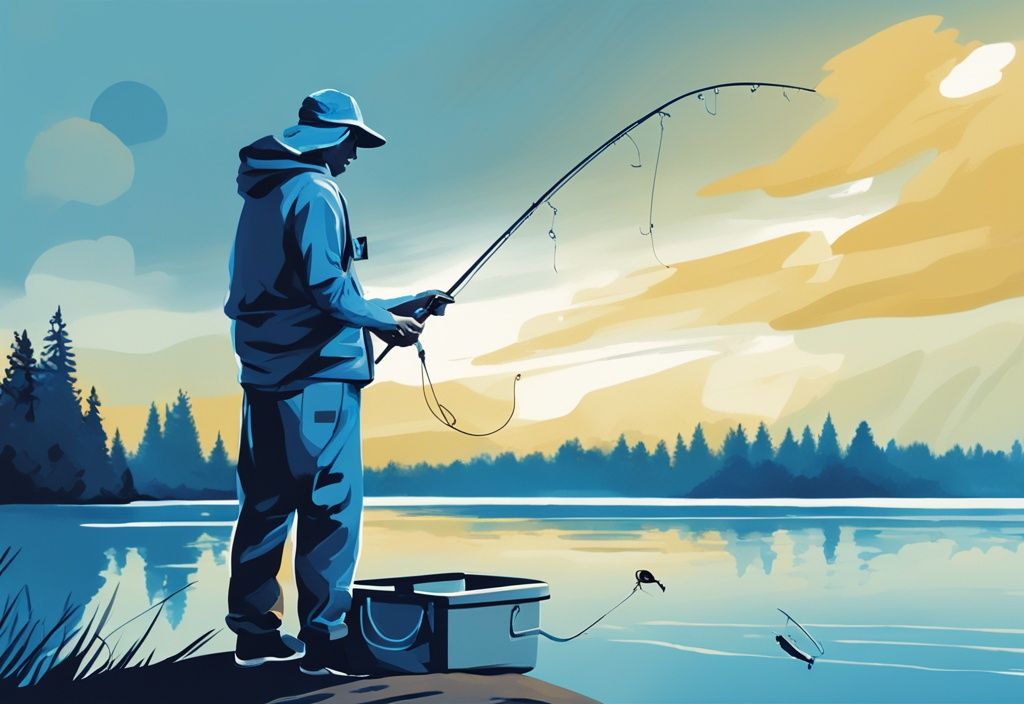
The reels’ design, featuring advanced braking systems and lightweight spools, reduces the risk of backlashes and allows for a more controlled release of line. These factors, coupled with the challenge and skill required, make BFS fishing a fun and technically rewarding endeavor for anglers looking to hone their craft.
Dealing with Challenges in BFS Fishing
BFS fishing, or Bait Finesse System fishing, introduces a unique set of challenges that anglers must overcome to become proficient with this specialized technique. Understanding these challenges and how to tackle them is crucial for anyone looking to master BFS fishing.
Limitations in Deep Water Applications
One thing you’ll notice with BFS fishing is its limited effectiveness in deeper waters. Sure, BFS shines like a diamond in shallow and clear conditions, but once you’re past the 15-foot mark, things get tricky. That’s because the lightweight lures used in BFS just aren’t designed for those depths. But hey, no need to hang up your fishing hat! Focus on targeting species that thrive in shallow or moderately deep areas and fine-tune your techniques to get the most out of that sweet spot.
Learning Curve: Casting Distance and Reel Tuning
Now, let’s talk about the learning curve, which can feel like hiking up a steep mountain at times. Casting distance and reel tuning are where most folks stumble. BFS gear promises precision, but nailing that precision takes practice—lots of it. You’ll need to spend some quality time honing your cast to avoid the dreaded backlash and to get your lure to fly the distance. Reel tuning is another beast; it’s about making those little tweaks based on lure weight and weather conditions. Keep practicing, and soon enough, it’ll feel like second nature.
Limited Rod and Reel Availability
You might find it tricky to get your hands on BFS-specific gear. Unlike traditional fishing equipment, specialized rods and reels for BFS fishing can be scarce and sometimes painfully expensive. This can be a real bummer for anyone new to BFS. To get around this, it’s crucial to do your homework. Hunt down reliable suppliers who stock quality gear, and don’t shy away from joining fishing communities or forums for insider tips. Trust me, it’s worth the effort.
Challenges in Windy Conditions
BFS fishing can be a real struggle in windy conditions. The lightweight lures just can’t stand up to a strong breeze, causing your casting accuracy to plummet. It’s way harder to place those lures precisely where you want them when the wind is in play. Your best bet is to keep an eye on the weather and plan your trips for calmer days. Alternatively, consider using slightly heavier lures or mastering wind-resistant casting techniques to give yourself a fighting chance when the wind picks up.
By recognizing and addressing these specific challenges, you can effectively utilize BFS fishing to its fullest potential. This transforms potential drawbacks into opportunities for skill enhancement and a deeper understanding of what BFS fishing is all about.
Unveiling BFS Fishing Gear
The Right Rods and Reels for BFS Fishing
Understanding what BFS fishing is begins with recognizing the specialized gear needed for this unique method. BFS, or Bait Finesse System, relies on rods and reels engineered for finesse fishing with small lures. BFS rods are crafted to be ultralight to light action, typically measuring between 5 to 7 feet. This design ensures high sensitivity and precise casting.
The reels are equally specialized, usually weighing less than 7 ounces to maintain balance with the lightweight rods. They come equipped with shallow spools that accommodate lighter lines and feature advanced braking systems to minimize backlashes during casting. The low max drag is intentional, providing just enough resistance while prioritizing smooth, controlled casts. By employing such finely tuned equipment, BFS fishing enhances the angler’s ability to detect subtle bites and cast with pinpoint accuracy.
Expert Line Recommendations
Selecting the right line is crucial in mastering what is BFS fishing. The goal is to match the light and sensitive nature of BFS gear. Three types of lines are predominantly used: light monofilament, fluorocarbon, and braids with small diameters.
- Monofilament: Ranging from 2-4 pounds, this option offers a bit of stretch which helps reduce the risk of line breakage. It’s particularly forgiving, making it a good choice for beginners.
- Fluorocarbon: Also in the 2-4 pound range, fluorocarbon is praised for its invisibility under water and its ability to eliminate the need for leader knots. It spools well onto BFS reels, providing a seamless fishing experience.
- Braid: Typically a .06 or .08 PE with a breaking strength of 9-13 pounds. These 8-strand braids have a rounded profile which reduces tangles, offering durability and efficiency in casting.
Choosing the right line enhances the performance of your BFS gear, allowing for better sensitivity and control over the lure.
Choosing Lures Compatible with BFS Setups
Understanding what is BFS fishing also involves selecting the right lures. BFS excels with small, finesse lures such as crankbaits, metal lures, and various soft lures. Each type has its specific advantages:
- Soft lures: Great for targeting perch, these lures can mimic the subtle movements of small prey, attracting the attention of elusive fish.
- Crankbaits and metal lures: Ideal for trout fishing, these lures provide versatility and realism, often mimicking the look and movement of small baitfish.
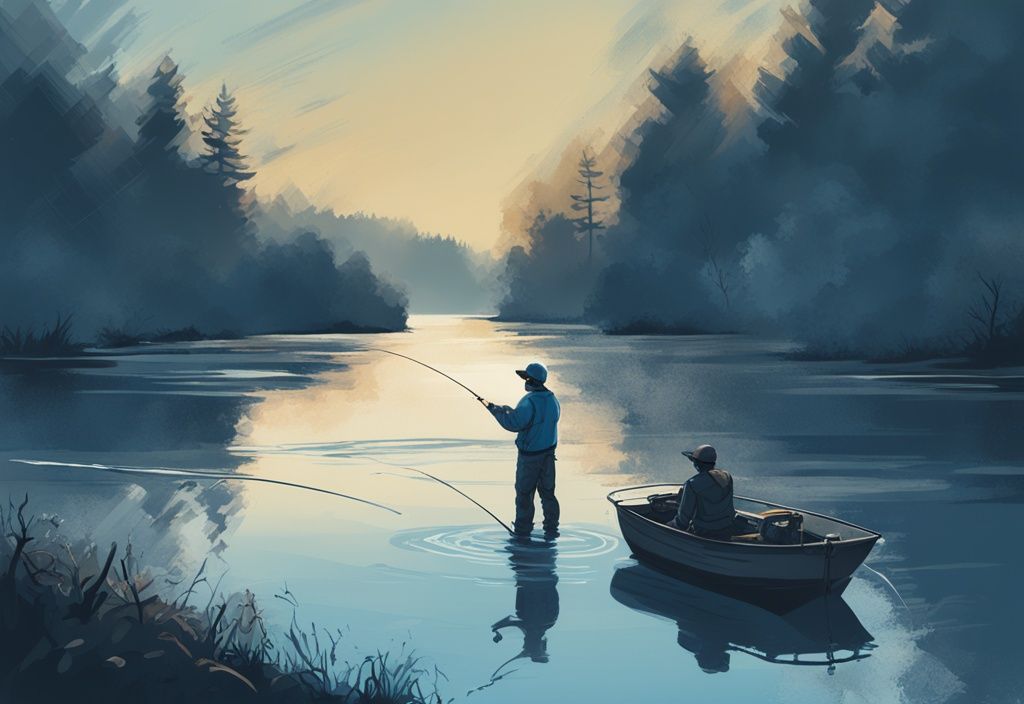
Using downsized versions of conventional baits allows anglers to target a diversity of fish species with precision, without necessarily resorting to ultra-light lines. This versatility is a significant part of what makes BFS fishing a favored technique for handling well-pressured fishing environments.
Perfecting Your BFS Casting Techniques
Mastering BFS casting techniques sets the foundation for successful fishing adventures. Let’s dive into some key aspects to up your BFS game.
Mastering Smooth and Fluid Casting Motions
Mastering the casting technique in BFS fishing is crucial for achieving precision and distance. The key lies in employing smooth and fluid casting motions such as sidearm or roll casts.
Imagine the sidearm cast: your arm swings gracefully, building momentum gradually, and there’s the lure, sailing smoothly through the air. No abrupt whip casts that can mess up your aim and cause backlash. Instead, you’ve got a controlled, steady flow that sends your lure precisely where you want it. This isn’t just about technique—it’s an art form.
Practice these casting techniques regularly. Feel the motion becoming second nature, almost like an extension of your thoughts. Before you know it, those fluid motions will translate to improved accuracy and distance, making every cast count.
Easy Techniques for Avoiding Backlashes
Backlashes, those frustrating “bird nests,” can really spoil a good day of BFS fishing. But with the right techniques, they become a thing of the past.
First, get familiar with your reel’s braking system. Many models boast advanced magnetic braking systems that let you control the spool’s speed with impressive precision, critically reducing backlash risks.
Consider lightweight spools—they reduce inertia and give you better control while casting lighter lures. And don’t forget: practice those fluid casts we talked about. The more you practice, the more you’ll notice fewer tangles and smoother line management.
Finally, tweak your reel settings to match your lure weight and the water conditions. It’s like fine-tuning a guitar before a performance—each adjustment gets you closer to that perfect cast.
By incorporating these practical techniques and deep understanding of what BFS fishing entails, you’ll find your casting abilities soaring, transforming your fishing outings into memorable experiences.
BFS Fishing in Action: Conditions and Applications
Ideal Water Depths and Types for BFS Fishing
BFS fishing shines in clear and shallow waters, proving most effective at depths of 15 feet or less. Imagine yourself casting under trees or bushes, navigating your lure near dense vegetation with precision. This technique is a game-changer, especially in heavily pressured lakes where fish are notoriously wary. With BFS, you get the finesse needed to entice those elusive bites, targeting spots that conventional tackle just can’t access.
Weather and Environmental Factors for Success
Let’s talk about wind – it’s not your friend when it comes to BFS fishing. The lightweight nature of BFS lures means that extremely windy conditions can wreak havoc on your control and accuracy. But, ah, those calm days with perfect visibility and clear water? That’s when BFS fishing truly shines. Overhanging branches and shallow banks present ideal environments, allowing you to execute precise casts and reach fish hiding in complex structures. Picture yourself under a canopy of leaves, the water like glass – that’s the BFS sweet spot.
Amazing Travel Possibilities with BFS Fishing
One of the joys of BFS fishing is the mobility it offers. Picture this: you’re exploring a secluded mountain stream or casting in an urban pond with ease. The compact and travel-friendly nature of BFS gear is a boon for the roving angler. No need to lug around heavy equipment; just grab your BFS setup and hit a variety of fishing spots. This flexibility turns every outing into an adventure, offering you diverse opportunities to refine this specialized technique. Whether you’re hiking through a forest or navigating city streets, BFS fishing adds a layer of excitement to your journey.
By understanding what BFS fishing is and recognizing the optimal conditions and environments, you’re well on your way to leveraging the advantages of this innovative approach. It’s all about enhancing your fishing experience, making each trip not just successful, but truly enjoyable.
Getting Started in BFS Fishing: A Beginner’s Guide
Getting started with BFS (Bait Finesse System) fishing is all about understanding the intricacies of the equipment and mastering precise casting techniques. Here’s how you can dive into this technique and make the most out of your fishing experience.
Choosing the Right Gear
For beginners, selecting the appropriate BFS rod and reel is crucial. Look for lightweight rods that offer high sensitivity; typically, rods should be ultralight to light action and around 5-7 feet in length. Choose reels that are designed with shallow spools and weigh less than 7oz. These reels should feature advanced braking systems to reduce backlashes and provide easy control over your casts.
The right setup ensures better precision and accuracy, which are key aspects of what is BFS fishing.
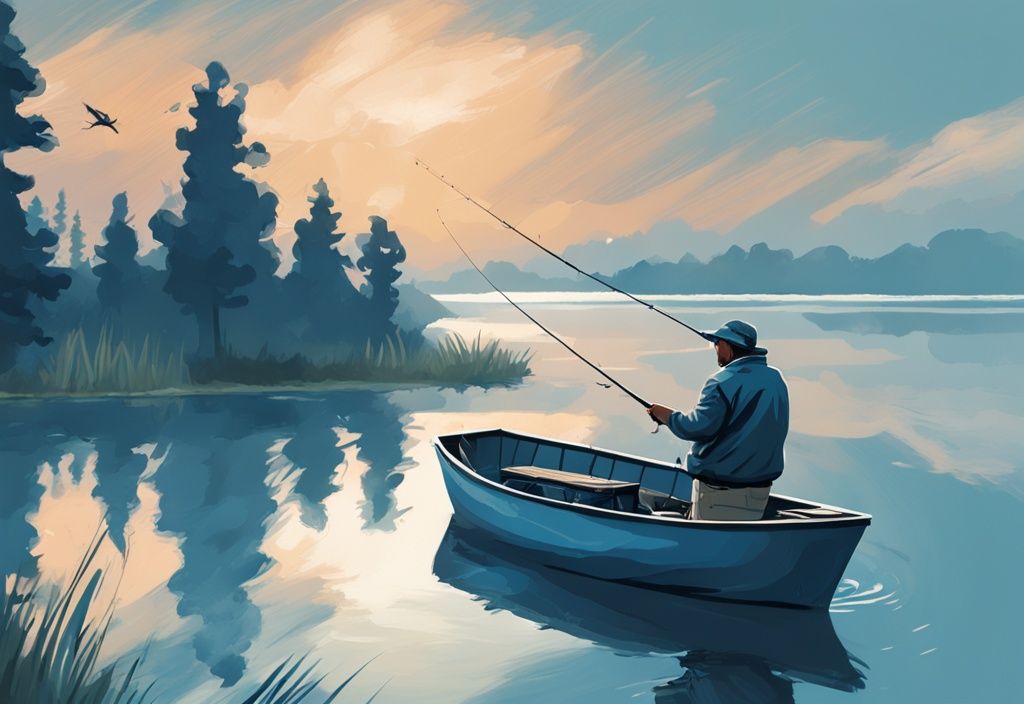
Practicing Controlled Casting
Mastering BFS fishing involves practicing controlled casting techniques. Start with smooth, fluid motions such as sidearm or roll casts to maintain control. Avoid whip casts, as they can lead to backlashes and affect accuracy. Set your reel to a comfortable tension to prevent overruns, and gradually adjust it as you gain confidence.
Consistent practice will help you develop the necessary finesse to cast small lures accurately.
Selecting the Appropriate Lines
Beginners are advised to start with light monofilament or fluorocarbon lines. Monofilament lines with a 2-4lb strength offer stretch and minimize the risk of line breakage. Fluorocarbon lines, also 2-4lb, provide excellent sensitivity and eliminate the need for additional leader knots.
These lines fill BFS spools effectively and help in maintaining consistent casting control, which is central to the principles of what is BFS fishing.
Choosing Compatible Lures
Opt for lures that are compatible with BFS setups. The choices include small crankbaits, metal lures, and various soft lures. For example, small crankbaits and metal lures are excellent for targeting trout, while soft lures work well for species like perch.
Experiment with different lures to understand which ones perform best in your fishing environment, ensuring they align with the lightweight gear typically used in BFS fishing.
Understanding and Overcoming Challenges
As with any fishing technique, BFS fishing comes with its unique set of challenges. It’s crucial to acknowledge these and gradually learn to overcome them through practice. Limited effectiveness in deep waters and windy conditions can be managed by choosing the right fishing spots and times. Moreover, tuning your reel correctly and practicing casting can help mitigate the learning curve.
Familiarizing yourself with these obstacles and working through them is part of what makes BFS fishing a rewarding and enjoyable experience.
By following these guidelines, beginners can start understanding and enjoying what is BFS fishing, gradually honing their skills and appreciating the finesse and precision this method promises.
Frequently Asked Questions about BFS Fishing
How Does BFS Fishing Differ from Regular Baitcasting?
BFS fishing, short for Bait Finesse System fishing, brings a unique twist to traditional baitcasting. Picture this: you’re using highly specialized, lightweight rods and reels designed for small, finesse lures. This technique zeroes in on precision casting and accuracy, especially in those tight, tricky spots. Unlike standard baitcasting gear, BFS reels boast shallow, lightweight spools and advanced braking systems. This setup not only enhances finesse but also bumps up sensitivity, giving you a refined angling experience.
Can a Beginner Successfully Try BFS Fishing?
Absolutely, beginners can dive into BFS fishing and make a splash! With a bit of practice and the right gear, you’re on your way. Starting off with user-friendly BFS setups eases the learning curve. Sure, the technique can be a bit tricky at first, but stick with it. Persistence and regular practice are your best buds here, leading you to conquer BFS like a pro.
Which Fish Species Can I Target with BFS Fishing?
BFS fishing isn’t just for the pros—it’s perfect for snagging fish like bass, trout, crappie, bluegill, perch, and various sunfish. Think small to medium-sized fish that often play hard to get with conventional gear. Whether you’re hitting up a clear lake or a bustling river, BFS fishing opens up a world of opportunities to catch those elusive, picky fish.
Is BFS Fishing Appropriate for Saltwater Environments?
While BFS fishing shines in freshwater, particularly in clear or shallow spots, don’t completely rule out saltwater. Sure, it’s designed primarily for freshwater, but with the right saltwater-tolerant equipment, you can extend your finesse fishing into brackish or coastal waters. Just choose your gear wisely to target suitable saltwater species.
Navigating the world of BFS fishing might seem daunting, but with patience and passion, it becomes a rewarding adventure. Remember, it’s all about enjoying each moment on the water, feeling the sun’s warmth, and experiencing the thrill of the catch. Happy fishing!
